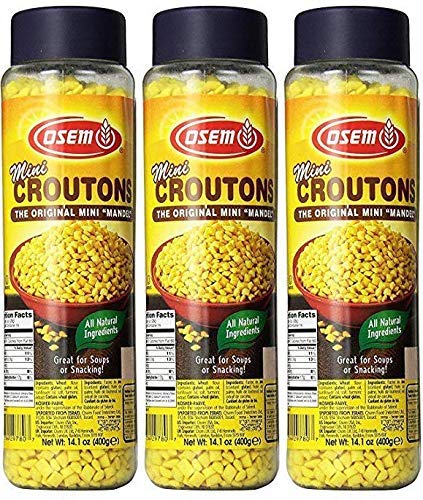Regardless, each year there are numerous stories where Chometz is found over Pesach. And the incidences happen both on Yom Tov and on Chol HaMoed.
WHAT TO DO
The Shulchan Aruch (OC 446:1), of course, tells us what to do. If it is found on Yom Tov – it must be covered with a vessel so that the Chometz not be seen. It cannot be moved, of course, because of the issue of Muktzah. At night, after Yom Tov, it must be burned.
This is based upon the Gemorah (Psachim 7a), that tells us that if one finds Chometz on Yom Tov one must cover it with a vessel, and when Yom Tov is over one should burn it.
WHY COVER IT?
The reason for this is that there would be no biblical Mitzvah to burn it over Yom Tov, and the burning would constitute a burning shelo l’tzorech for no Yom Tov need. Why is this so? Because, presumably, he had already recited the formula for the Bitul, the negation of ownership of all Chometz big and small, hidden or revealed that he may own. Since he had already recited this Bitul formula, the Mitzvah of burning the Chometz does not set aside the laws of Yom Tov. [The Mishna Brurah rules according to the opinion of the Ran that burning it on Yom Tov would be biblically prohibited.]
WHEN ONE DID NOT SAY THE BITUL
There are two differing opinions, however, in a case where the person did not recite the Bitul formula.
- The Vilna Gaon rules that the halacha of the Shulchan Aruch applies across the board, and one may not destroy it or move it on Yom Tov.
- Other Poskim (Rashi, Rashba, SmaG, Ohr Zaruah), however, hold that when the Bitul was not recited, one may flush it down the toilet, throw it in a river, or scatter it in the wind.
So which view do we follow? The Mishna Brurah states that the custom is like the first view, however, in a community where the custom is to flush it down the toilet through a gentile then one should not negate a custom in Israel.
BUT DOESN’T THE GOY OWN IT NOW?
The Shulchan Aruch ruled that, aside from issues of Yom Tov, if found – the Chometz should be burned even if one did recite the Bitul. However, things may have changed since then – in light of how we sell the Chometz in contemporary times. In our times, the forms in which we sell the Chometz include all Chometz that we own, known and unknown. What are the implications of this development? The Chometz that we find therefore belongs to the gentile! If that is the case, is it then permitted to burn the gentile’s Chometz?
CONTEMPORARY POSKIM’S VIEW
This issue has been addressed by contemporary Poskim –
- Rav Tzvi Pesach Frank zt”l held (Mikrai Kodesh Vol. I Pesach #74) to the position that the Chometz should be placed in the Goy’s section.
- Rav Shternbuch and Rav Wosner (Shaivet HaLevi Vol. IX #116) both hold that it is permitted to burn it.
Rav Shternbuch bases his view on a Shach (CM 358:1) that if one is completely sure that his friend would be amenable to it, one may consume fruits without the permission of the owner. In our case, since the one who finds the Chometz is completely sure that the gentile would be amenable to the burning of the Chometz that was found, and that he would not have to pay for the balance of it after Pesach, it would be permitted.
MAY ONE TOUCH THE CHOMETZ?
May one handle Chometz that is to be burned or should it be kicked to the site that one will burn it in? The Shulchan Aruch rules (446:3) that if a gentile’s Chometz blew onto the roof of a Jew, he should move it with a stick but not handle it with one’s hands. The reason is that when one handles things with the hands it is likely that one can come to eat it.
The answer is that one may touch it. The Mishna Brurah 446:10 states that since one is burning it one may handle it by hand if it is for a short period of time. It is a good idea, however, to say out loud that one is not acquiring the Chometz. This is based on a responsa of the Rivash cited in the Biur Halacha. Why is this so? Because a person’s hand acquires items for him even if he does not have in mind that he is acquiring it.
Hopefully, however, most of us will have done a good job eliminating the Chometz before Pesach has started and there will be no need to be doing so on Pesach itself.
One last thought. When burning the Chometz – make sure that it is not burnt too close to houses where the smoke can enter and cause people breathing issues.
The author can be reached at [email protected]












2 Responses
Was the Osem crouton product pictured in the article found to be chometz and not kosher for peseach or is this just some file photo used to illustrate the headline?? We have been using those soup croutons this yom tov and they are marked kosher for peseach.
The idea that one may burn the Goya Chometz becuase he would be amenable to your doing so is Lichora not a reason for you to have any MICHAYEV ti burn it. Would you go next door to your goyishe neighbor’s house and burn some of his Chometz if only he was amenable to it?
If our Mechira is valid, and it is, (we make 6 or 7 Kinyanim etc), why would a person WANT to burn the goys Chometz ?!
I suspect the Poskim were referring ti a case where the individual who finds the chonetz suspects that the Mechira may not have included the Chometz that was found. There are many scenarios where that could be the case , beyond the scope of this forum. I’m such a case, he would want to burn it, but would have a problem of Safek Gezel Akum, and the sevora that they say would apply.